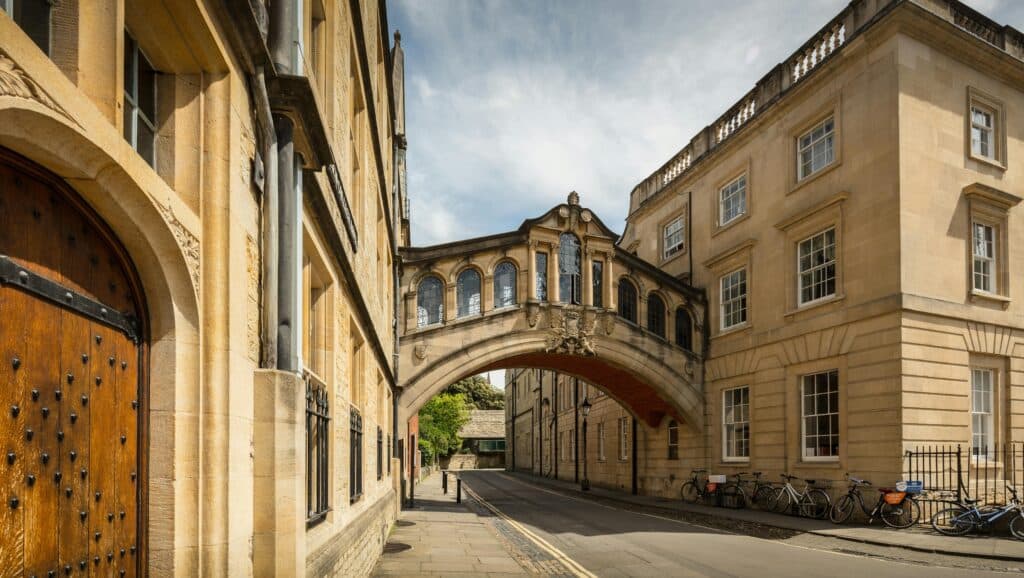The Montessori Method: Revolutionary or Overhyped?
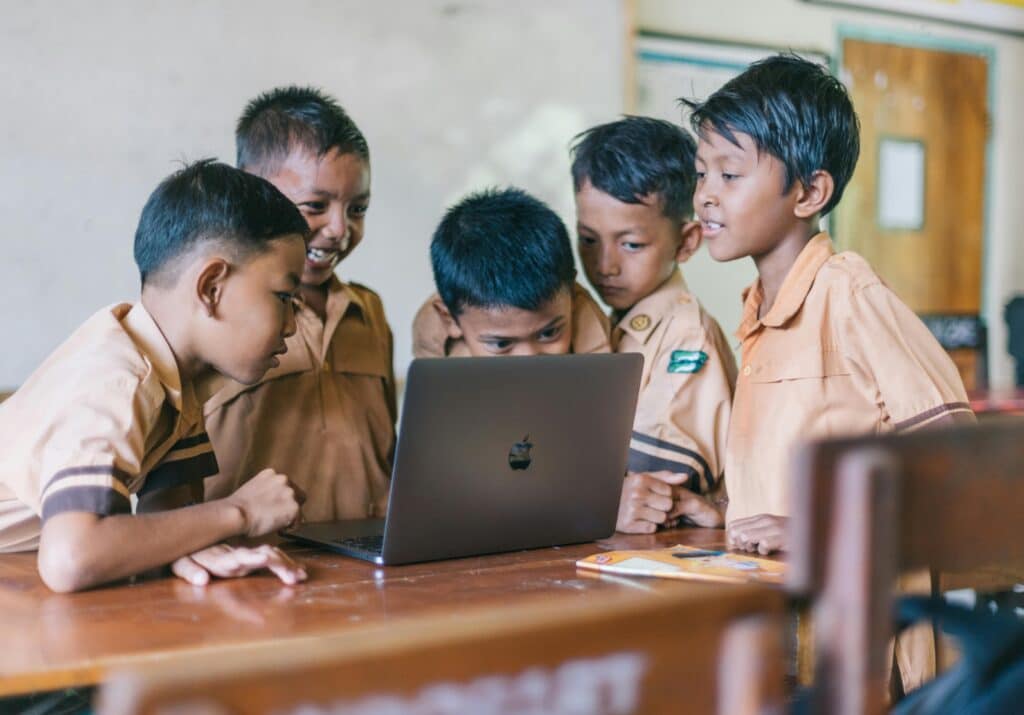
You’ve probably heard parents raving about their child’s Montessori school—how little Emma is reading at three or how Jake organizes his toys without being asked. But with tuition costs that can rival college fees, you’re wondering if the Montessori method is truly worth the investment or just another expensive educational trend.
If you want to cut through the marketing hype and understand what Montessori education actually delivers. If you’re debating school options for your child or questioning whether those impressive-sounding benefits justify the price tag, you’ll get the evidence-based answers you need.
Here’s what we’ll explore:
• Understanding the Core Principles of Montessori Education – What makes this method different from traditional schooling and why it attracts devoted followers
• Revolutionary Aspects That Transform Traditional Education – The specific ways Montessori challenges conventional classroom structures and learning approaches
• Scientific Evidence Supporting Montessori Effectiveness – Real research data on academic outcomes, executive function development, and long-term success rates
• Common Criticisms and Perceived Limitations – Why some experts question whether Montessori benefits are real or just expensive placebo effects
• Real-World Implementation Challenges – The gap between Montessori theory and practice, plus what happens when your child transitions to traditional school
Key questions you’ll have answered:
• Does Montessori education actually improve academic performance compared to traditional schools?
• Are the social and emotional benefits worth the premium price?
• How do Montessori students perform when they transition to conventional schools?
• What happens when schools don’t implement the method correctly?
• Is this educational approach accessible only to wealthy families?
• Do the advantages last into adulthood or fade over time?
By the end, you’ll have a clear picture of whether Montessori represents genuine educational innovation or clever marketing—and more importantly, whether it’s right for your child’s unique learning needs.
Understanding the Core Principles of Montessori Education
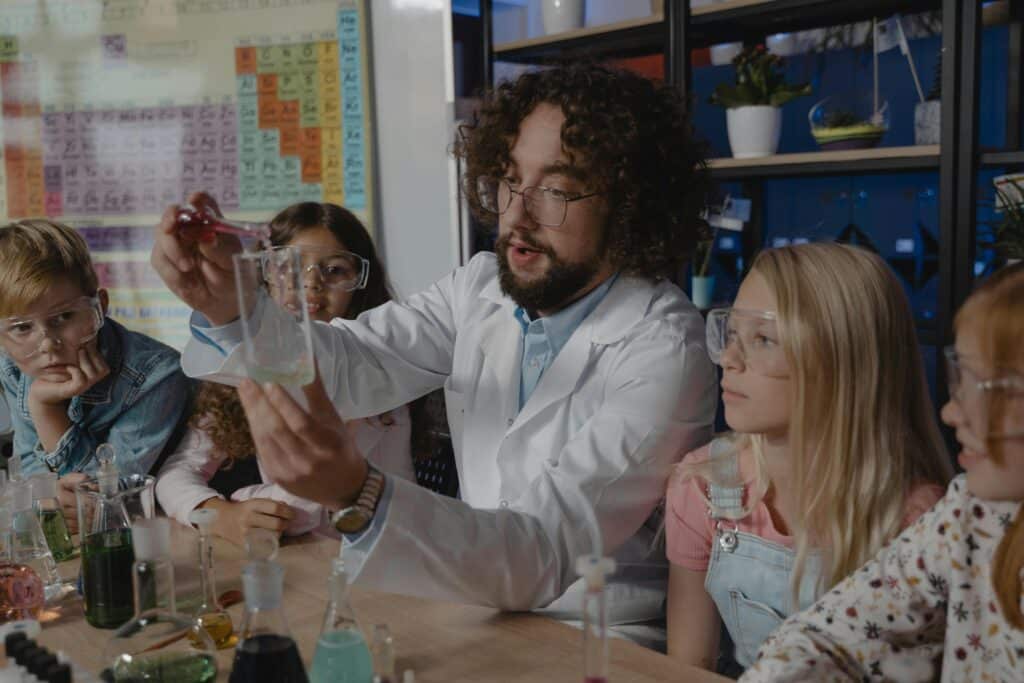
Child-led learning and self-directed activity
• Freedom of choice drives engagement: You’ll discover that Montessori education empowers children to select their own meaningful, challenging work that sparks their interest, fostering deep engagement and intrinsic motivation rather than external rewards.
• Auto-education as the foundation: The method operates on the belief that children are naturally capable and willing to teach themselves when provided with interesting learning stimuli, making them active participants in their own educational journey.
• Uninterrupted work periods: Your child experiences extended periods where they can work at their own pace without interruption, building coordination, concentration, and independence through a natural cycle of choosing, engaging, completing, and cleaning up activities.
• Individual pacing respects learning styles: Rather than forcing all children to learn at the same speed, the Montessori approach allows each child to progress according to their unique developmental timeline and learning preferences.
• Intrinsic motivation replaces external rewards: You won’t find gold stars or external reward systems here—children derive genuine satisfaction and accomplishment from completing activities and mastering skills for themselves.
Mixed age classrooms fostering peer learning
• Natural mentorship opportunities: Multi-age groupings allow younger children to learn from older peers through observation and interaction, while older children reinforce their own learning by teaching concepts they’ve already mastered.
• Leadership development: Your older child naturally develops leadership skills and serves as a role model, creating a supportive community that mirrors real-world social interactions across different ages.
• Cooperation over competition: Because each child works individually at their own pace, the environment promotes collaboration rather than competition between different age groups.
• Developmental stage groupings: Typical arrangements include children aged 2.5-6 years in Early Childhood, 6-9 years in Lower Elementary, and 9-12 years in Upper Elementary, based on Maria Montessori’s identified planes of development.
• Real-world preparation: This structure reflects how you interact with people of various ages and dispositions in everyday life, preparing children for authentic social experiences.
Hands-on materials designed for independent exploration
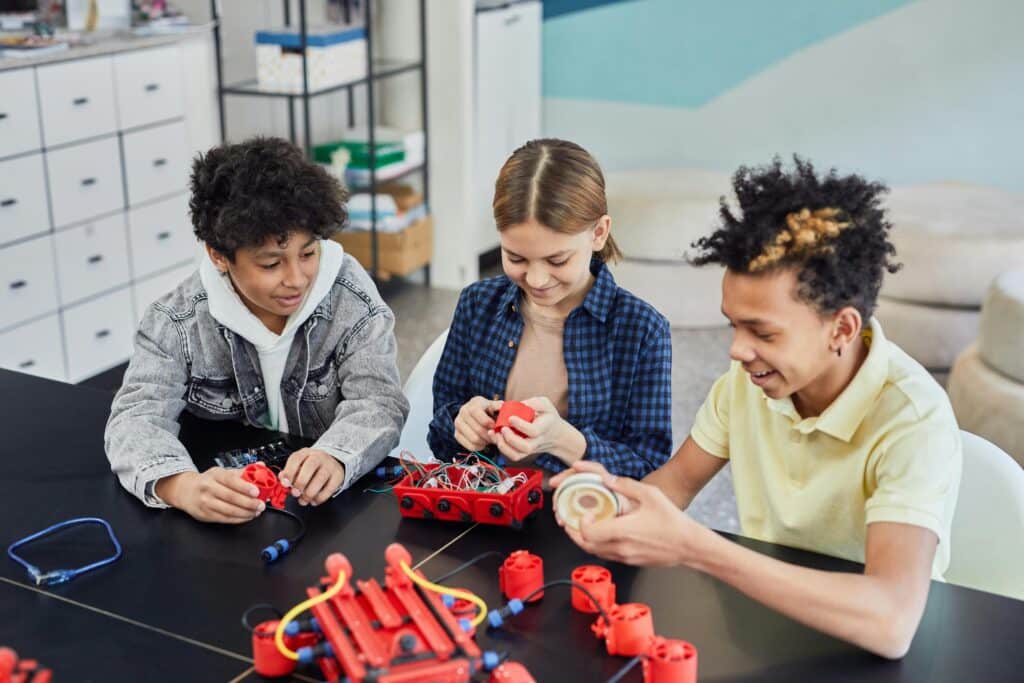
• Self-correcting design: Montessori materials provide instant feedback about progress, allowing children to recognize, correct, and learn from errors without adult assistance, strengthening self-esteem and self-motivation.
• Concrete to abstract progression: Your child develops abstract understanding by first encountering concepts in concrete form, such as learning decimal systems through Golden Beads grouped into units, tens, hundreds, and thousands.
• Sensorial development focus: Specially designed materials develop and refine the five senses while building foundations for speech, writing, and mathematics by isolating specific qualities like color, size, or shape.
• Child-sized and accessible: Everything in the environment is designed to fit children’s hands and capabilities, with light, appropriately sized furniture that enables independent use and exploration.
• Purposeful activity emphasis: All materials represent meaningful work that children naturally gravitate toward, especially activities requiring exactitude and precision that help refine their coordination of movement.
Role of teachers as guides rather than instructors
• Observer and facilitator: Your child’s teacher serves as a qualified guide who supports natural development by carefully observing interests and abilities, then introducing developmentally appropriate lessons and materials based on individual readiness.
• Individual lesson presentation: Rather than group instruction, lessons are presented one-on-one based on each child’s academic progress, ensuring personalized attention and appropriate challenge levels.
• Environmental preparation: Teachers carefully prepare the classroom environment with aesthetically arranged materials presented sequentially to meet developmental needs, creating order that assists logical thought development.
• Progress tracking and support: Educators monitor each child’s unique journey through the curriculum, providing guidance while allowing children to direct their own learning experiences.
• Respectful interaction: The teacher-child relationship operates from genuine respect, honoring each child’s uniqueness, freedom to choose, ability to self-correct, and right to work at their own pace within established ground rules.
Revolutionary Aspects That Transform Traditional Education

Respecting Children’s Natural Learning Pace and Interests
Unlike traditional education systems that push all children through identical curricula at predetermined speeds, the Montessori method recognizes that you learn best when allowed to follow your natural developmental timeline. This child-centered learning approach allows you to choose activities that genuinely capture your interest, fostering deep engagement and concentration that wouldn’t occur under forced instruction.
Developing Intrinsic Motivation Over External Rewards
The Montessori approach revolutionizes motivation by removing the traditional system of rewards and punishments that you’re accustomed to in conventional classrooms. Instead of working for grades or external validation, you develop an inner sense of accomplishment and pride in your work. This intrinsic motivation encourages you to take ownership of your learning journey, building confidence and self-discipline that extends far beyond academic achievements into lifelong learning habits.
Building Practical Life Skills Alongside Academic Knowledge
Montessori education integrates real-world skills directly into your learning experience, incorporating activities like cooking, cleaning, and gardening into the curriculum. These practical life skills teach you patience, focus, and self-sufficiency while developing fine motor skills and concentration. Rather than viewing these as separate from academics, you experience learning as a holistic process that prepares you for independence and responsibility in daily life.
Common Criticisms and Perceived Limitations

Lack of structure may not suit all learning styles
Your child may struggle with Montessori’s emphasis on self-direction if they thrive with more structured guidance. The method’s freedom for students to choose their activities and learning pace can overwhelm children who need clearer boundaries and teacher-led instruction to feel secure and focused.
Transition challenges to traditional school systems
When you move your child from a Montessori environment to traditional schooling, they may face significant adjustment difficulties. The shift from self-paced, hands-on learning to rigid schedules, standardized curricula, and teacher-directed instruction can be jarring. Your child might struggle to adapt to sitting in rows, following strict timelines, and accepting less autonomy in their learning process.
Quality inconsistency across different Montessori programs
You’ll find that Montessori education quality varies dramatically between schools. While some institutions maintain authentic, accredited programs with properly trained teachers, others may use the Montessori name without adhering to its core principles. This inconsistency makes it challenging for you to ensure your child receives genuine Montessori education.
Limited preparation for standardized testing environments
Your child may be unprepared for standardized testing formats after experiencing Montessori’s individualized assessment approach. The method’s focus on intrinsic motivation and self-evaluation doesn’t align with external testing pressures, potentially putting your child at a disadvantage in traditional academic measurements and college preparation requirements.
Real-World Implementation Challenges
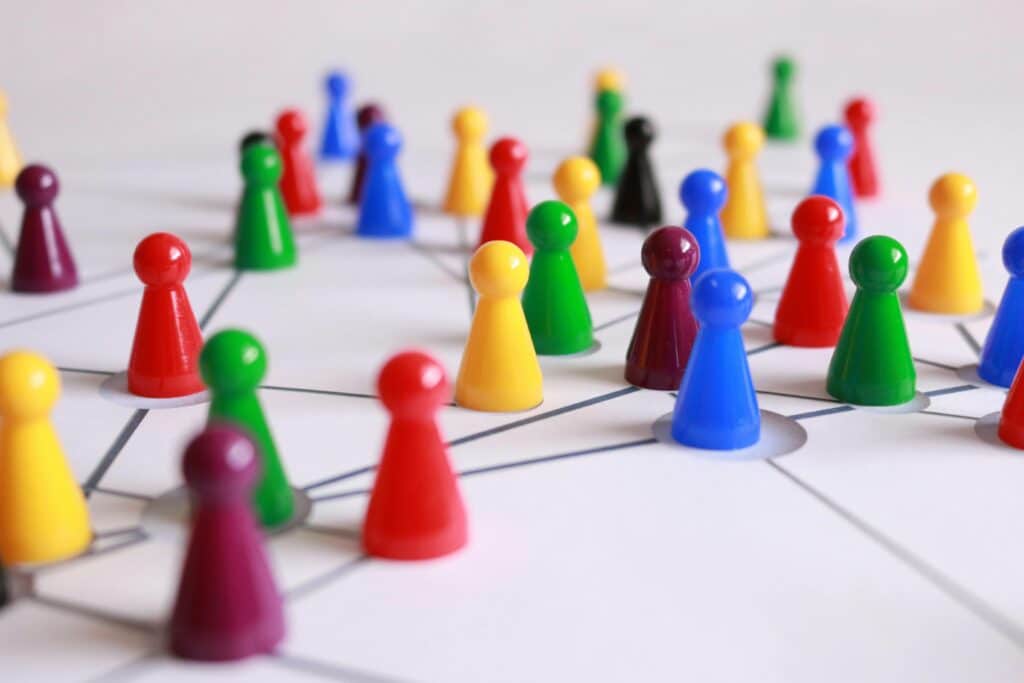
High costs making it inaccessible to many families
When you’re considering Montessori implementation challenges, you’ll find that cost barriers create significant accessibility issues. Each new Montessori classroom requires $65,000 to $75,000 in material startup costs, making it particularly challenging for public schools that lack the flexible funding streams available to private institutions. Unlike private Montessori schools that can rely on high tuition fees and endowments, public programs must depend primarily on state and local government funding, often requiring school bonds and overrides to secure necessary resources.
Teacher training requirements and certification demands
You’ll discover that finding qualified Montessori educators presents another substantial hurdle, as these programs require teachers with specialized training and certification. This challenge becomes especially pronounced for new and growing Montessori schools that must add certified teachers annually as their programs expand by grade level. Rather than searching externally for already-certified instructors, some successful public programs have turned internally, identifying traditionally certified teachers willing to undergo Montessori certification through online processes and ongoing professional development coaching.
Finding authentic Montessori programs versus modified versions
Your search for authentic Montessori programs reveals significant quality variations across implementations. Research shows that while 51% of programs achieve high fidelity with a median score of 92%, approximately 18% operate as low fidelity programs with a median of just 60%. You’ll notice that newer programs particularly struggle with authenticity—over 40% of programs operating for fewer than four years fall into the low fidelity category, while more established programs generally demonstrate higher fidelity to core Montessori principles.
The Verdict: Weighing Innovation Against Investment

The evidence reveals that Montessori education isn’t simply revolutionary hype—it’s a method with documented benefits that come with significant considerations. Here are the key findings:
Core Research Findings:
| Outcome Area | Effect Size | Evidence Quality | Key Finding |
|---|---|---|---|
| Academic Achievement | 0.24 | High | Students perform 15-30% better in core subjects |
| Executive Function | 0.36 | Moderate | Strongest advantage in self-regulation skills |
| Language Arts | 0.17 | High | Consistent improvements in literacy |
| Mathematics | 0.22 | High | Notable gains in mathematical thinking |
| Social Skills | 0.23 | Moderate | Positive but modest improvements |
Critical Implementation Factors:
• Age matters most: Benefits are strongest for preschool and elementary students
• Quality control issues: Many schools use the Montessori name without authentic implementation
• Resource dependency: Private schools show larger effect sizes than public programs
• Cost barrier: Annual tuition ranges from $4,500 to $35,000, creating accessibility challenges
Your decision about Montessori education should ultimately depend on your child’s individual needs, your family’s financial capacity, and access to high-quality programs in your area. The research shows that when properly implemented, Montessori can provide real academic and developmental advantages, particularly in executive function and self-regulation skills that benefit children throughout their lives. However, you shouldn’t feel pressured by the hype—traditional education can also produce successful, well-rounded individuals, and the “best” educational choice is the one that aligns with your child’s learning style and your family’s values and circumstances.
Works Cited
Lillard, Angeline S., et al. “A National Randomized Controlled Trial of the Impact of Public Montessori Preschool at the End of Kindergarten.” Proceedings of the National Academy of Sciences, vol. , no. , 2025, https://doi.org/10.1073/pnas.2506130122
Mallett, J.D., and K. Schroeder. “A Comparison of Montessori and Non-Montessori Public Elementary School Students.”(PDF). 2015, Public Montessori, https://www.public-montessori.org/wp-content/uploads/2017/03/Mallett-Schroeder-2015-Comparison-of-Montessori-and-non-Montessori-public-elementary-school-students.pdf
Randolph, Justus J., et al. “Montessori Education’s Impact on Academic and Non-Academic Outcomes: A Systematic Review.” Campbell Systematic Reviews, vol. 19, 2023, e1330. The American Montessori Society+2Association Montessori Internationale+2
“Fast Facts: Montessori Research.” American Montessori Society, 2023, https://amshq.org/about-montessori/press-kit/montessori-research/


